#isaac newton telescope
Explore tagged Tumblr posts
Text
🍎 The Amazing Life and Discoveries of Sir Isaac Newton
Introduction: Unveiling Newton's Remarkable Journey
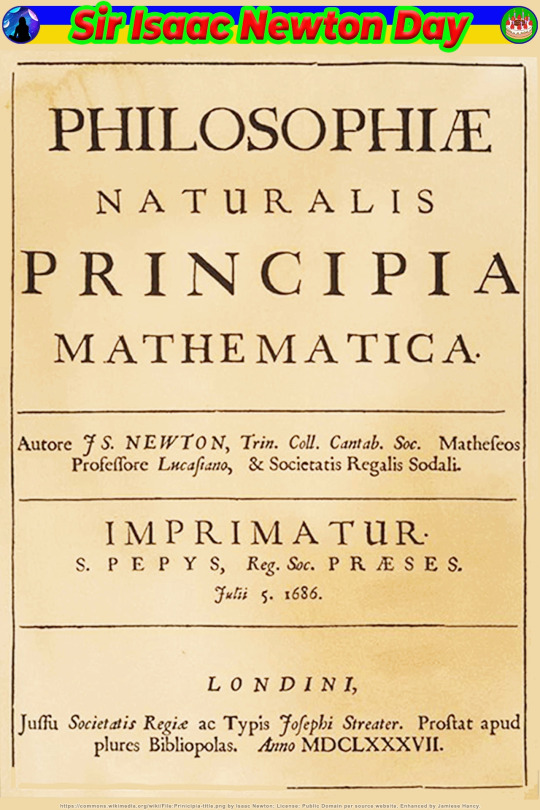
It's December 25th. To quote the greatest science communicator of our time, Neil deGrasse Tyson, "On this day long ago, a child was born who, by age 30, would transform the world. Happy Birthday, Isaac Newton," who was born this day in 1642 in Woolsthorpe-by-Colsterworth, Lincolnshire, England. According to the Gregorian calendar, which the world uses today, Newton was actually born on January 4th, 1643. However, in Newton’s day, England used the Julian calendar, and according to that calendar, Newton was born on December 25th. Mr. Tyson and I (among others) prefer to celebrate Sir Isaac’s birthday on the Julian calendar date.
And so today we celebrate the birthday of one of the most important human beings who’s ever graced our planet. Isaac Newton was an extraordinary physicist and mathematician and is credited with laying the foundation for classical physics and jumpstarting the scientific revolution. He believed and proved that all of nature is governed by universal laws that can be expressed mathematically. Newton’s list of accomplishments are long and profound and continue to shape our understanding of the world. His influence will be felt forever.
From his early years at Cambridge University to his later role as President of the Royal Society, Newton's impact on scientific thought cannot be overstated. Sir Isaac Newton's contributions to physics, astronomy, and mathematics are unparalleled. His theories and laws revolutionized our understanding of motion, gravity, and light. Through his meticulous observations and rigorous experiments, he laid the foundation for modern science as we know it today.
So let’s celebrate the life and work of this extraordinary man and explore how his insatiable curiosity led him to unravel the mysteries of the universe. Let’s uncover the stories behind some of his most iconic discoveries, such as the laws of motion and universal gravitation and see how his relentless pursuit of knowledge forever changed our perception of reality.
Prepare to be inspired by Sir Isaac Newton's unwavering dedication to unraveling nature's secrets. His legacy continues to inspire generations of scientists and serves as a testament to what can be achieved through relentless pursuit, unwavering determination, and an insatiable thirst for knowledge.
Let’s now embark upon this fascinating journey and unveil the remarkable life and contributions of Sir Isaac Newton – a true pioneer in the annals of scientific history.
🍎 Early Life and Education: The Formative Years
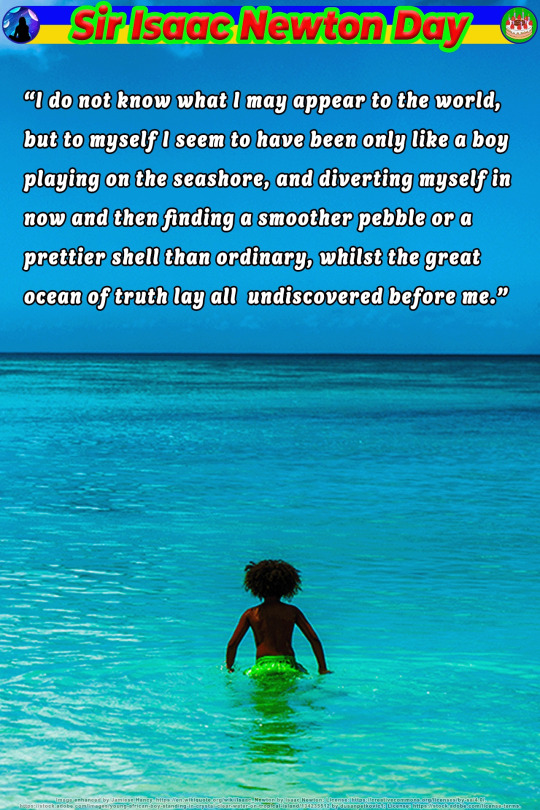
Isaac's father unfortunately died two months before he was born. His mother remarried when he was three. Isaac’s stepfather died when Isaac was 12, and he was immediately pulled out of school to help run the family estate. Isaac seemed to show little promise in school anyway. His teachers described him as idle and inattentive. And Isaac soon showed he had no talent or interest in managing an estate, either.
An uncle persuaded Isaac's mother to let him go back to school. This time he must've shown some promise because after he graduated from primary school, the school's headmaster convinced Isaac's mother to send him to college. Isaac entered Cambridge’s Trinity College in 1661 at the age of 19 and began studying philosophy, science, and mathematics. He returned home in 1665 when Trinity College closed down due to a bubonic plague pandemic. Free to study whatever he wanted to while at home, he gobbled up all the mathematics texts he could lay his hands on. During this time, Isaac developed calculus and different theories on optics.
When Isaac returned to Cambridge in 1667, his newly-developed mathematical prowess was evident to all. His professors marveled at his ability to grasp complex concepts with ease and solve intricate problems effortlessly.
But it wasn't just his exceptional mathematical abilities that now set Isaac apart. His insatiable curiosity drove him to delve into fields of knowledge well beyond the confines of the classroom. He voraciously consumed more books on science, literature, and philosophy, expanding his horizons and developing a well-rounded understanding of the world.
🍎 Universal Laws of Motion: Revolutionizing Physics
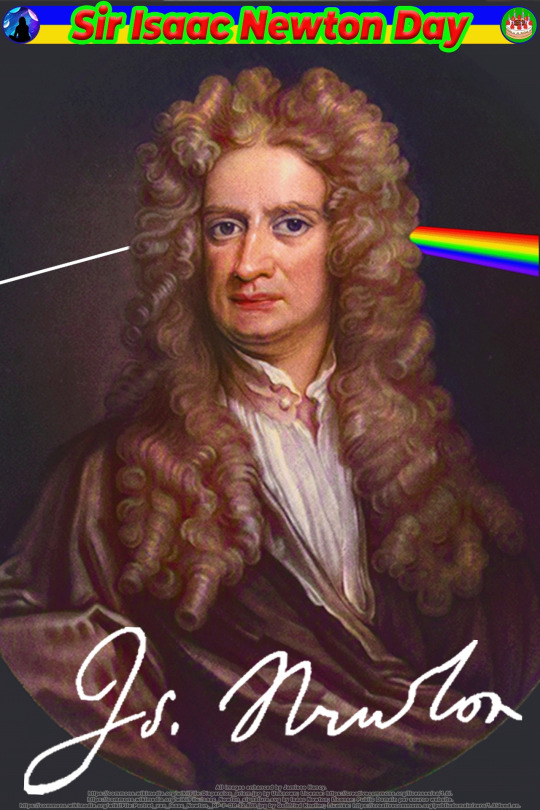
The Universal Laws of Motion that Newton formulated have revolutionized the fields of physics and mechanics. These laws provide a fundamental understanding of how objects move and interact with one another.
The First Law of Motion, also known as the Law of Inertia, states that an object at rest will remain at rest, and an object in motion will continue moving at a constant velocity unless acted upon by an external force. This concept has paved the way for our understanding of momentum.
The Second Law of Motion is known as the Law of Acceleration. It introduces the relationship between force, mass, and acceleration. It states that the acceleration of an object is directly proportional to the net force acting upon it and is inversely proportional to its mass. This law enables us to calculate how much force is needed to accelerate or decelerate an object.
Lastly, the Third Law of Motion is known as the Law of Action-Reaction. It states that for every action, there is an equal and opposite reaction. This principle explains why objects exert forces on each other when they come into contact.
Newton's Universal Laws of Motion have shaped our understanding of physics and have truly revolutionized our comprehension of how objects move in space. And they continue to have practical applications across numerous contemporary scientific disciplines such as engineering, robotics, and space exploration. They serve as a foundation for designing efficient machinery, predicting celestial movements, and even explaining everyday phenomena like walking and throwing a ball.
🍎 Universal Law of Gravitation: Unlocking the Secrets of Celestial Bodies
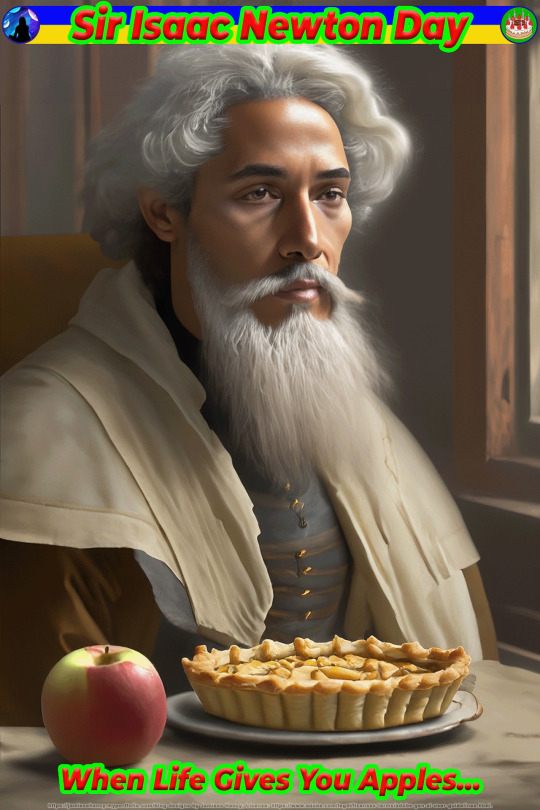
Newton’s development of the three Universal Laws of Motion led him to formulate his Universal Law of Gravitation — a groundbreaking theory that has revolutionized our understanding of celestial bodies and their interactions. This law describes the gravitational force between any two objects in the universe, enabling us to unlock the secrets of planetary motion and other cosmic phenomena.
Through its elegant simplicity and yet immense explanatory power, the Universal Law of Gravitation transformed our perception of gravity and its influence on celestial bodies. Newton theorized that a smaller object doesn't actually orbit around a larger object, but that the two bodies orbit around their common center of gravity. With this realization and ever-more precise measurements of the sun and planets, his model of the solar system has continued to become more and more accurate over the years.
One of the most famous anecdotes associated with Newton is, of course, the story of him watching an apple fall from a tree as he was gazing at the moon. It’s said that this event sparked Newton's curiosity about why objects fall towards the Earth, leading him to develop the Universal Law of Gravitation. This simple observation paved the way for a profound understanding of how gravity not only governs our everyday lives, but also shapes the movements and behavior of every object in the universe. It serves as a testament to human curiosity and ingenuity in uncovering nature's secrets while reminding us that even seemingly ordinary occurrences can lead to extraordinary discoveries.
Newton’s Universal Law of Gravitation continues to be a cornerstone in astrophysics and cosmology, guiding our exploration and expanding our knowledge of the cosmos. By comprehending and applying this law of nature, scientists through the years have been able to unravel mysteries surrounding planetary orbits, predict astronomical events with precision, and even explore outer space.
🍎 Optics: Shedding Light on the Nature of Color

Newton's groundbreaking experiments with light have played a pivotal role in unraveling the mysteries of optics and color. At the time, scholars hotly debated the subject of whether or not color was an intrinsic property of light. Newton settled the debate in 1665 when he invented the prism and discovered that white light is composed of a spectrum of colors. By passing a beam of sunlight through a prism, Newton observed how it refracted into its constituent colors, creating a beautiful display which we now call the color spectrum.
This experiment revolutionized our understanding of light and demonstrated that different wavelengths correspond to different colors. It not only shed light on the nature of color but also paved the way for further exploration in the field of optics. His own continued experimentation led Newton to construct the world's first practical reflecting telescope in 1668.
The discoveries of Sir Isaac Newton about the nature of light have been instrumental in expanding and enriching our scientific knowledge. They continue to shape scientific advancements and inspire scientists and researchers to delve deeper into the intricacies of optics and its applications.
Our understanding of how light interacts with various materials has led to the development of innovative technologies like lasers and fiber optics. These inventions have had a profound impact on numerous fields such as communication, photography, lighting design, and even art. By comprehending how light behaves and how colors are perceived by our eyes, we’ve gained valuable insights into how we can manipulate these elements for practical purposes and creative expression in various aspects of our daily lives.
🍎 Mathematics: Pioneering Concepts Still Used Today
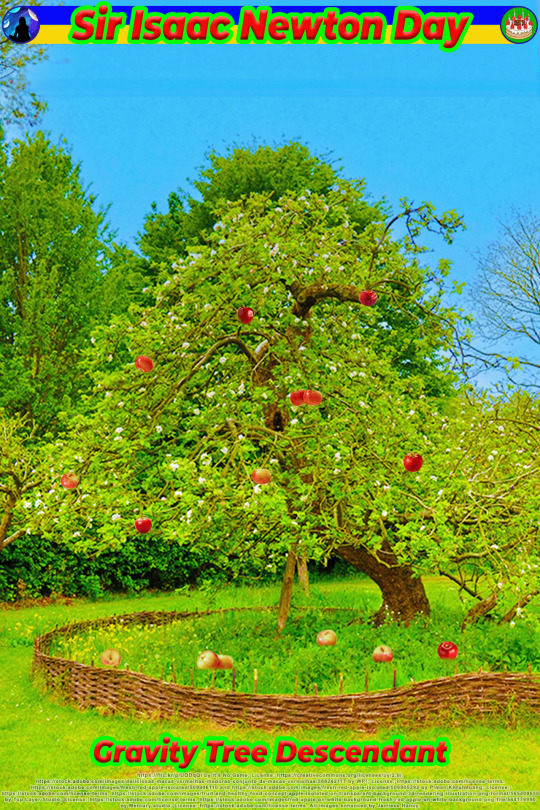
Sir Isaac Newton’s contributions to the field of mathematics are nothing short of remarkable. His groundbreaking work in calculus has had a lasting impact on the field and continues to be used today.
Newton's development of calculus revolutionized mathematical thinking and provided a powerful tool for solving complex problems. His concepts, such as differentiation and integration, laid the foundation for modern mathematical analysis.
These pioneering mathematical concepts are still widely in use in various fields from physics to economics. They allow us to understand and model intricate systems, make predictions, and solve real-world problems. His contributions continue to shape our understanding of the world around us and serve as a testament to the power and beauty of mathematics. When sending a probe to the outskirts of the solar system, NASA scientists don't rely on Einstein's relativity to work out the math – they use Newtonian physics equations.
🍎 Legacy and Impact: How the Discoveries of Sir Isaac Newton Shaped Modern Science as We Know It
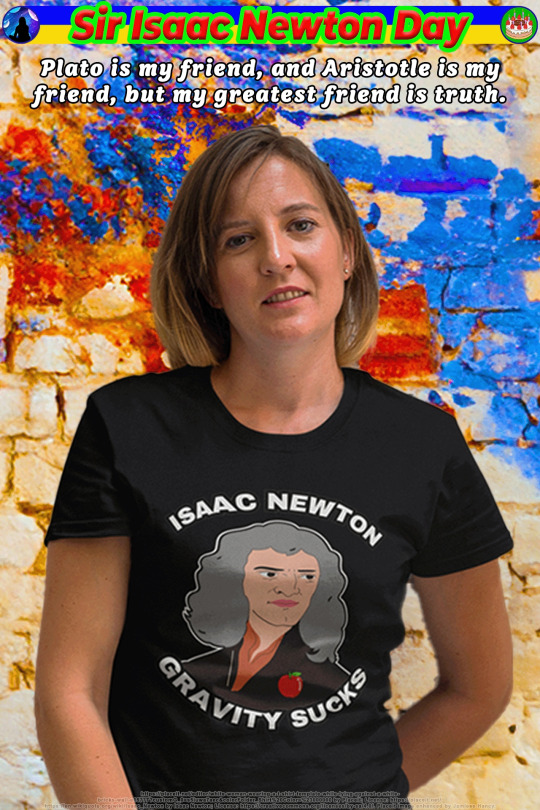
Sir Isaac Newton has unquestionably secured his place in history. He's widely regarded as one of the most important people who's ever lived. His contributions to science have left an indelible mark on our understanding of the natural world. His groundbreaking work in physics and mathematics continues to shape modern science as we know it, as many of his ideas still hold true and his equations are still in use today.
One of the most significant aspects of Newton’s legacy is his influence on future scientists and thinkers. His Universal Laws of Motion and Gravitation, along with his invention of calculus revolutionized the fields of physics and mathematics, providing a solid foundation for subsequent scientific discoveries. Newton's rigorous approach to experimentation and mathematical reasoning set new standards for scientific inquiry, inspiring generations of researchers to follow in his footsteps.
Furthermore, Newtonian physics has had a profound impact on technology advancements. From the Industrial Revolution to space exploration, his work has provided the framework for engineering marvels that have transformed society. Scientists and engineers continue to apply the principles derived from Newton's work as they make further advancements in various modern fields such as aerospace engineering, robotics, and telecommunications.
Newton was revered during his own lifetime as the culminating figure of the Scientific Revolution and has since gone on to inspire and influence many scientists who have stood upon his shoulders to see even farther — Edmund Halley, James Clerk Maxwell, Ernst Mach, Albert Einstein, Edwin Hubble, Richard Feynman, Carl Sagan, Stephen Hawking, Neil deGrasse Tyson, and on and on.
It’s truly remarkable how Sir Isaac Newton's ideas continue to shape our present and future. His intellectual prowess and dedication to scientific pursuit have paved the way for countless breakthroughs that have propelled humanity forward. We owe an enormous debt of gratitude to this brilliant man whose legacy will forever be intertwined with modern science and technology. ☮️ Peace… Jamiese
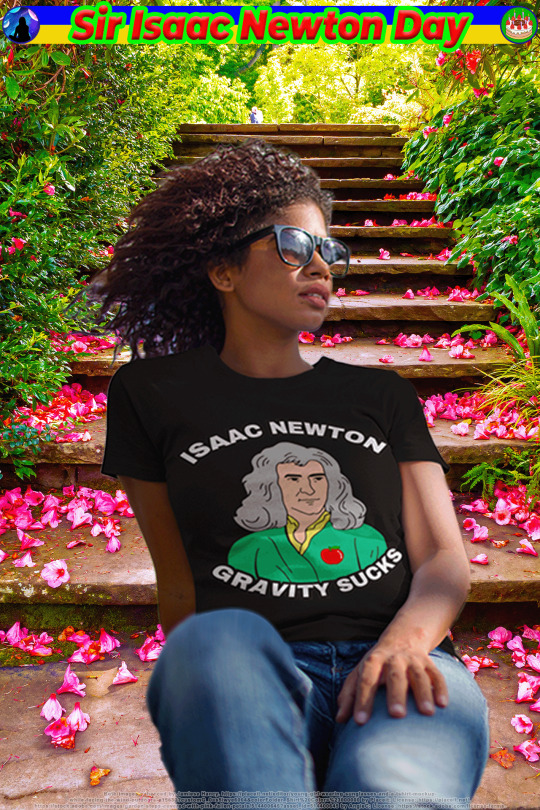
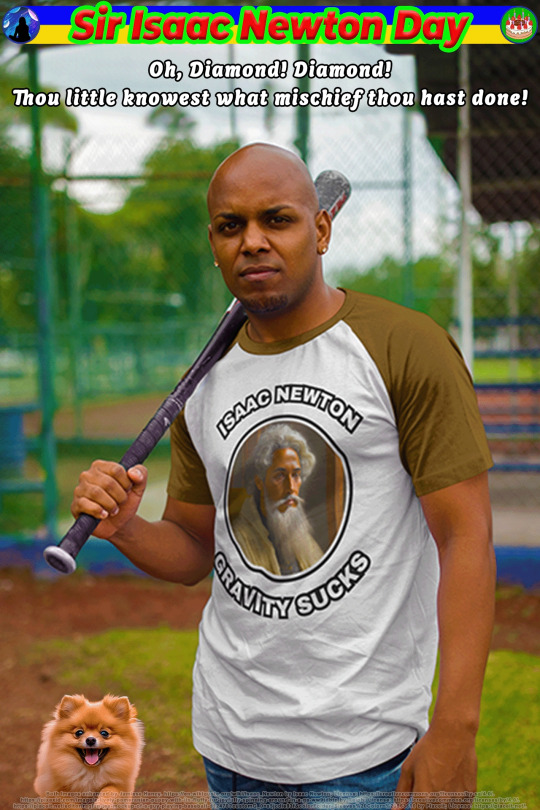
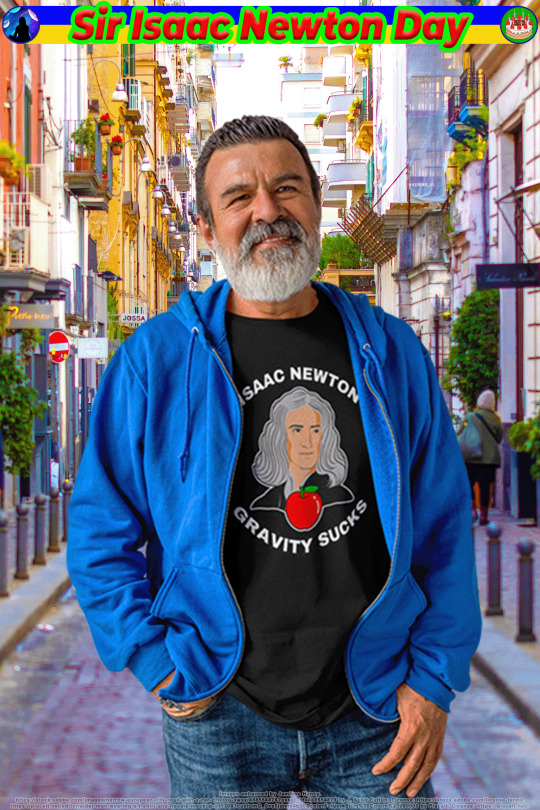
📚 Sources:
#isaac newton#sir isaac newton#isaac newton quote#isaac newton telescope#happy birthday isaac newton
0 notes
Text

Isaac Newton's Self-made Telescope, 1671
This self-made telescope, also known as the “Newtonian reflector” used a concave mirror instead of lenses to gather light, which allowed for clearer, sharper images.
#msn#the perspective#wikipedia#isaac newton#telescope#1671#1670s#1600s#newtonian reflector#concave mirror#science#stem#polymath#mathematician#physicist#astronomer#alchemist#theologian#author#15th century#scientific equipment
68 notes
·
View notes
Text
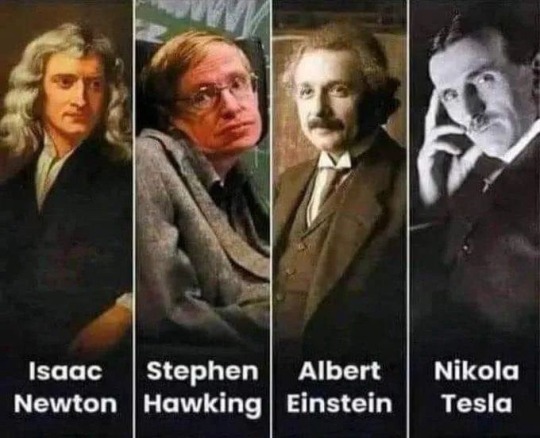
Feel free to explain why…
#astronomy#nasa#astronomers#universe#astrophotography#nasa photos#astrophysics#outer space#nasawebb#hubble space telescope#albert einstein#nikola tesla#isaac newton#stephen hawking#famous#astroblr#astrology observations#astro community#astro observations#questions#famous people#planetary science#space science
17 notes
·
View notes
Text
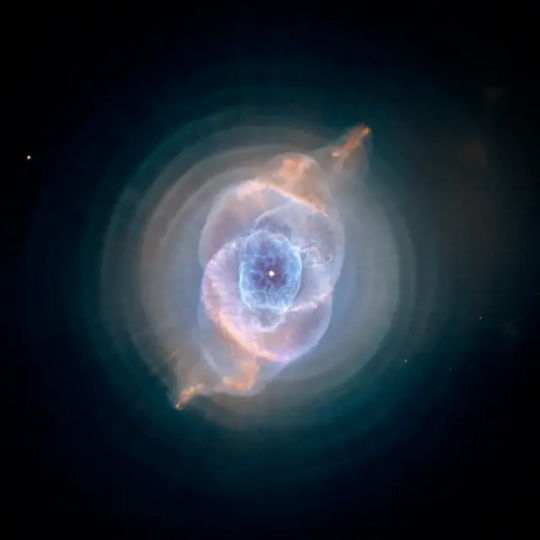
Cat’s Eye Nebula
The Cat's Eye Nebula, also known as NGC 6543, is one of the most well-known planetary nebulae located in the constellation Draco.
It is approximately 3,000 light-years away from Earth and is notable for its intricate structure and vibrant colors.
The Cat's Eye Nebula is formed from the outer layers of a dying star that has shed its material during the late stages of its evolution.
The central star, which is a hot white dwarf, is responsible for the intense ultraviolet radiation that ionizes the surrounding gas, causing it to glow.
One of the most striking features of the Cat's Eye Nebula is its "eyes," which are formed by the concentric shells of gas and dust that create a visually captivating appearance.
Credits: NASA, ESA, HEIC, and the Hubble Heritage Team (STScI/AURA) Acknowledgment: R. Corradi (Isaac Newton Group of Telescopes, Spain) and Z. Tsvetanov (NASA)
417 notes
·
View notes
Text
More late night ramblings from your favorite dumpsterbonfire~
If anyone else has posted about this, I do apologize; I did look at the main tag to try and catch up on everything today bc I haven't been on in a few days but I ended up not digging super deep cuz I got too excited, lol
The Griffith Observatory is definitely a really cool location to look into, the guy who had it built was a cool mf because he wanted astrology to be available to the public, not sequestered to only smart people and rich fucks. Free admission since it opened in 1935, a 305mm Zeiss refracting telescope, a triple-beam solar telescope, a planetarium, and a theater named after Leonard Nimoy, just to name a few things. The place is amazing, I'd love to go someday.
But one of the other features (that was actually completed before the observatory's opening) really has my attention - the Astronomer's Monument.
It's an homage to six of the greatest astronomers in recorded history - Galileo, Copernicus, Johannes Kepler, Isaac Newton, and William Herschel. Kepler stood out to me for some reason, and I haven't heard his name in a while so I looked him up to jog my memory. The guy was a genius, full stop. Astronomy, philosophy, dabbled in music, wrote stuff. But he was also a mathematician, and one of the biggest things he's known for math-wise is the Kepler conjecture:
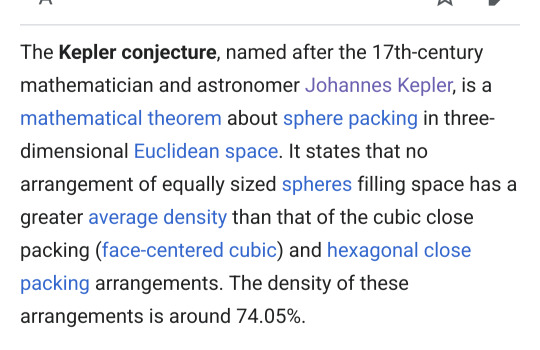


This British bastard has done it again, folks
#sleep token#vessel#lore#LOREEEE#i need to stop posting when sleep deprived istg lmaooooo#but i had to get this out#the others probably also have ties to Euclidean whatever but i have felt like shit all day and my head is splitting#i just found it screechingly hilarious that the one guy i look back into has that word like right there in his wiki page
88 notes
·
View notes
Note
The wheelchair of Theseus comment made me think of how the Isaac Newton Telescope was originally built in Sussex but, surprise, it’s kind of hard to use a telescope when it’s cloudy most of the time so it it was moved to the Canary Islands. The thing is, they used this as an opportunity to replace the mirror, the building, the dome, and the mount so there wasn’t actually much of the original telescope on the ship that took it to the Canary Islands. That said, it’s still a major functioning research telescope today!
This isn’t related to your wheelchair but it’s one of my favourite random astronomy stories so thought I’d share given your INW (Isaac Newton Wheelchair) situation which I hope gets resolved soon.
That’s a good fact, thank you!
20 notes
·
View notes
Text
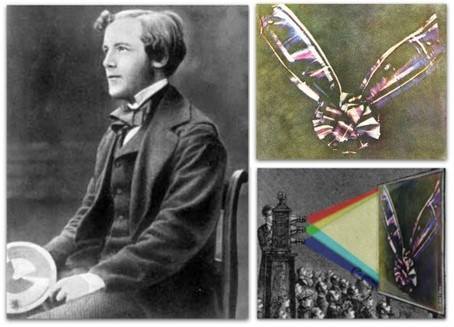
November 5th 1879 saw the death of Edinburgh-born mathematician and physicist James Clerk Maxwell.
James Clerk Maxwell is one of the most influential scientists of all time. Albert Einstein acknowledged that the origins of the special theory of relativity lay in Clerk Maxwell's theories, saying “The work of James Clerk Maxwell changed the world forever”.
Clerk Maxwell's research into electromagnetic radiation led to the development of television, mobile phones, radio and infra-red telescopes. The largest astronomical telescope in the world, at Mauna Kea Observatory in Hawaii, is named in his honour.
The worlds first colour photograph was produced, not by Maxwell as is often quoted but by Thomas Sutton, it was however for James Clerk Maxwell's pioneering 1861 demonstration of colour photography and Maxwell's principle of three-colour analysis and synthesis, quite simply, his idea, but as he was not a photographer he brought in Sutton to demonstrate it.
James Clark Maxwell was as important to the world of science, as Isaac Newton and Albert Einstein, he is regarded as such in science circles, but Newton and Einstein are sadly more well known out in the world at large.
20 notes
·
View notes
Text
guys did you know when Isaac Newton was a young man he looked at the sun with a telescope and almost made himself go blind
11 notes
·
View notes
Note
Trick or treat!

You receive Isaac Newton’s actual telescope. I’m sure you can make use of it!
58 notes
·
View notes
Text
2024 Tumblr Top 10
Thank you all for all the love you’ve given this side project of mine this year! I hope you have a wonderful New Year and I’ll be right there with you!
1. 892 notes - Oct 7 2024: The Northern Lights as seen from Fairbanks, Alaska on September 28, 2024 // Philippe Fossier

2. 593 notes - Apr 24 2024: The Western Veil Nebula, NGC 6960 // Karl-Heinz Macek
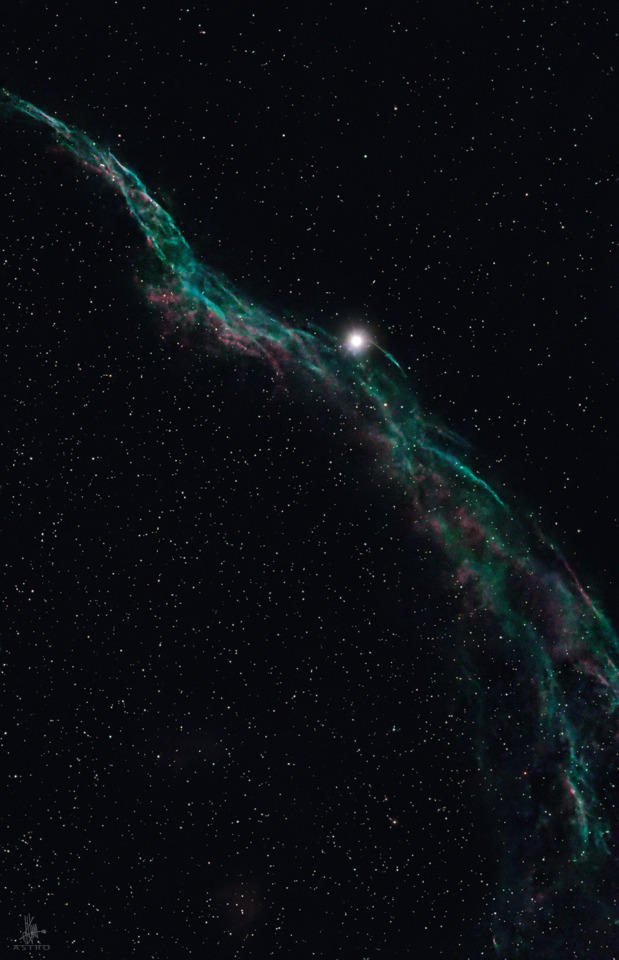
3. 522 notes - Sep 11 2024: The Butterfly Nebula, NGC 6302 // Alex Woronow
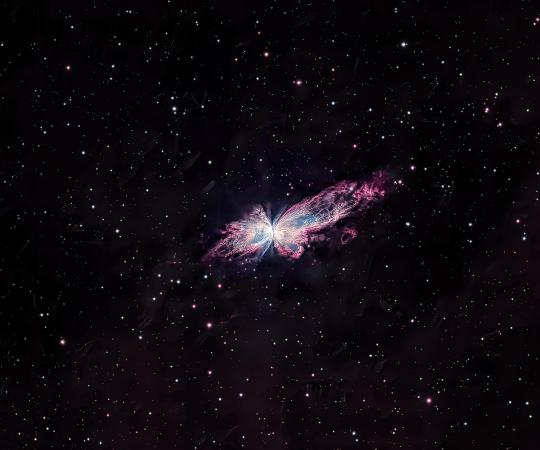
4. 464 notes - Jan 26 2024: The Milky Way and its red nebulae hanging over the Isaac Newton Telescope at La Palma // Jakob Sahner
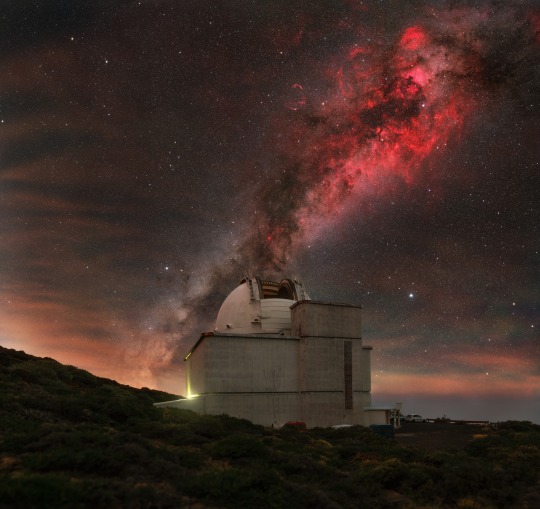
5. 453 notes - Feb 5 2024: The Dolphin Head Nebula, Sh2-308 // TRE
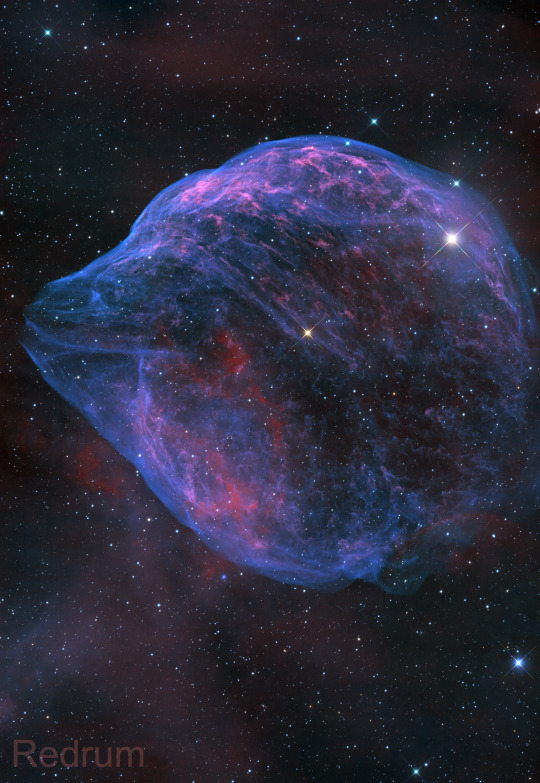
6. 410 notes - Jan 31 2024: The Geminids and Orion hanging over rural Quebec // rooftopastro.com

7. 391 notes - Jul 1 2024: An active region on the Sun on June 28, 2024 // 56altair
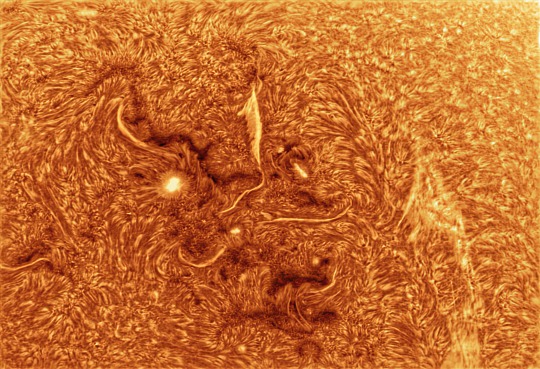
8. 387 notes - Apr 12 2024: The Sun’s corona during the April 8, 2024 solar eclipse // George Konkov

9. 369 notes - Dec 11 2024: A canopy of stars covering Stavronikita Monastery in Greece // Dimitrios
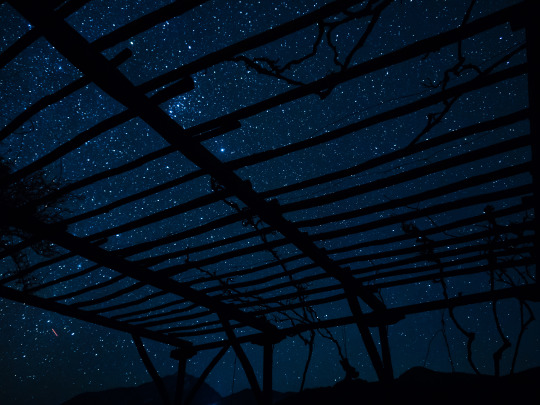
10. 362 notes - May 1 2024: LDN 673 // Arczik
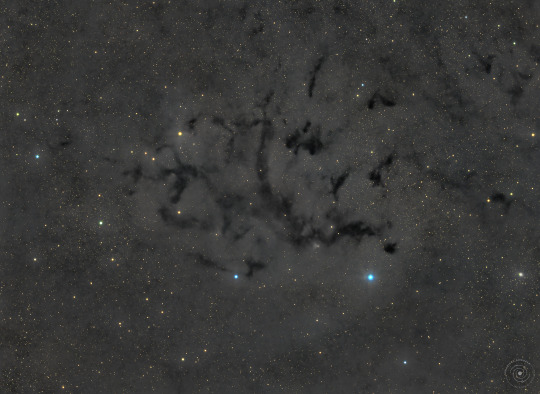
Created by TumblrTop10
53 notes
·
View notes
Text
If we're going to keep using the works of historic scientists in this series, Isaac Newton is absolutely perfect for it, especially in association with the Eye.
He literally invented the field of optics in physics, illustrated the color spectrum down to the overlapping wavelengths, finished the debate on color being an intrinsic property of light, created the reflecting telescope, and helped start early debate on the existence of photons. He also helped figure out how the optic nerves work, what rods and cones are, color vision and vision in general.
He was also incredibly reckless and outright stupid sometimes due to lack of care for safety during experiments. He probed the back of his eye with a needle to figure out how to stimulate the optic nerve, deliberately stared directly at the sun and almost blinded himself to figure out after images, and put mercury and shit in his eyes to help figure out tissues. He had a full-on nervous breakdown several different times due to the stress of his studies (and also probably serious mercury exposure).
He didn't care about safety, he cared about knowledge. Very familiar.
He was also the last Western alchemist and cared WAY more about his occult studies than things like helping reinvent physics and calculus. A lot of his occult stuff was unpublished due to expected backlash from other scientists and academics, but he wrote tons of manuscripts on alchemy, finding/creating the Philosopher's Stone, and prophecy regarding the apocalypse.
He was also probably a freemason (though apparently because the society was much more secretive back then there's no actual definitive proof that he was part of anything masonic officially? Either way he definitely hung out with and identified with a lot of freemasons in and outside of academia), which doesn't actually mean anything inherently sinister like it's often portrayed in media (they're basically just a public service/networking org that started out as a stonemason's guild/union and has some religious/philosophical symbolism that they use alongside some occult symbolism - trust me, they can barely organize a charity pancake breakfast let alone take over the world). But still, the Eye symbolism is everywhere in masonic societies in a functional sense via the Eye of Providence/All-Seeing Eye/Eye of Horus. Honestly I'm surprised TMA and TMP haven't used masonic stuff before given how well-known the symbol is and how sensationalized that stuff has become.
Anyway I hope you enjoyed the weird intersection of several of my interests. I like weird science history and TMP so if this comes up again I'm never gonna shut up about it. RIP Isaac Newton you brilliantly weird borderline mad scientist may you live on in this UK horror podcast and also the other stuff you did idk.
#tmp spoilers#tmp#tma#please keep using weird academics in this series i want to verbal vomit about them
19 notes
·
View notes
Photo

Galaxy Dwingeloo 1 Emerges
Credits: IoA, Cambridge, Isaac Newton Telescope
48 notes
·
View notes
Photo
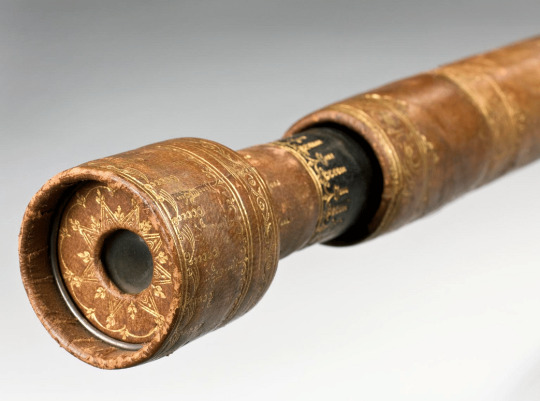
The Telescope & the Scientific Revolution
The invention of the telescope in 1608 is usually credited to the Dutchman Hans Lippershey. The astronomical telescope became one of the most important of all instruments during the Scientific Revolution when figures like Galileo (1564-1642) and Isaac Newton (1642-1727) used it to provide evidence for bold new theories about the heavenly bodies and the nature of the universe itself.
Continue reading...
109 notes
·
View notes
Text


New model that replaces dark energy and dark matter in explaining nature of the universe
Dr. Richard Lieu, a physics professor at The University of Alabama in Huntsville (UAH), a part of The University of Alabama System, has published a paper in the journal Classical and Quantum Gravity that proposes a universe built on steps of multiple singularities rather than the Big Bang alone to account for the expansion of the cosmos.
The new model forgoes the need for either dark matter or dark energy as explanations for the universe's acceleration and how structures like galaxies are generated.
The researcher's work builds on an earlier model hypothesizing that gravity can exist without mass.
"This new paper proposes an improved version of the earlier model, which is also radically different," Lieu explains. "The new model can account for both structure formation and stability, and the key observational properties of the expansion of the universe at large, by enlisting density singularities in time that uniformly affect all space to replace conventional dark matter and dark energy."
Lieu's improved model doesn't rely on exotic phenomena like "negative mass" or "negative density" to work. The theory offers instead the notion that the universe is expanding due to a series of step-like bursts called "transient temporal singularities" that flood the entire cosmos with matter and energy, yet happen so rapidly, they cannot be observed as these singularities wink in and out of existence.
"Sir Fred Hoyle opposed Big Bang cosmology and postulated a 'steady state' model of the universe in which matter and energy were constantly being created as the universe expands," Lieu notes. "But that hypothesis violates the law of mass-energy conservation.
"In the current theory, the conjecture is for matter and energy to appear and disappear in sudden bursts and, interestingly enough, there is no violation of conservation laws. These singularities are unobservable because they occur rarely in time and are unresolvedly fast, and that could be the reason why dark matter and dark energy have not been found. The origin of these temporal singularities is unknown—safe to say that the same is true of the moment of the Big Bang itself."
These singularities in space in lieu of dark matter also generate something called "negative pressure," a type of energy density, like that of dark energy, that has a repulsive gravitational effect, causing the universe to expand at an accelerating rate.
"An example is the negative pressure exerted by a magnetic field along a field line," Lieu says. "Einstein also postulated negative pressure in his 1917 paper on the Cosmological Constant. When positive mass-energy density is combined with negative pressure, there are some restrictions which ensure the mass-energy density remains positive with respect to any uniformly moving observer, so the negative density assumption is avoided in the new model."
The title of Lieu's new paper—"Are dark matter and dark energy omnipresent?"—hints at the researcher's ultimate conclusions: "They are not omnipresent—meaning, not present at all times," the researcher says. "They only appear in brief instances during which the matter and energy do fill the entire universe uniformly, apart from random spatial density variations which grow to form bound structures like galaxies.
Top of Form
Bottom of Form
"In between which they are not to be found anywhere. The only difference between this work and the standard model is that the temporal singularity occurred only once in the latter, but more than once in the former."
Looking to the future of his research, Lieu says the next step to validating his model of the cosmos could come through observations using earthbound instruments rather than something like the James Webb Space Telescope.
"The best way to look for the proposed effect is actually to use a large ground-based telescope—like the Keck Observatory [Waimea, Hawaii], or the Isaac Newton Group of Telescopes in La Palma, Spain—to perform deep field observations, the data of which would be 'sliced' according to redshift," the researcher notes.
"Given sufficient redshift (or, equivalently, time) resolution effected by the redshift slicing, one might just find that the Hubble diagram exhibits jumps in the redshift distance relation, which would be very revealing."
6 notes
·
View notes
Text
Now it's become "should be asleep but I'm reading about bronze"
The bronze age. Bronze being used in casting sculptures through history because it expands slightly before it hardens filling fine details of the mold and then contracts as it cools making the casting release easier. Low friction with other metals making it historically useful for cannonballs when less precise tolerancing compared to modern manufacturing could make iron cannonballs stick in the barrel. GUNMETAL. The mirrors in the first reflecting telescope made by Sir Isaac Newton were a type of bronze.
It's a good metal.
2 notes
·
View notes
Text
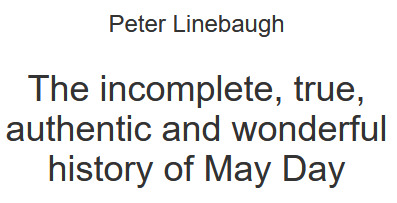
On Both Sides of the Atlantic
In England the attacks on May Day were a necessary part of the wearisome, unending attempt to establish industrial work discipline. The attempt was led by the Puritans with their belief that toil was godly and less toil wicked. Absolute surplus value could be increased only by increasing the hours of labor and abolishing holydays. A parson wrote a piece of work propaganda called Funebria Florae, Or the Downfall of the May Games. He attacked, "ignorants, atheists, papists, drunkards, swearers, swashbucklers, maid-marians, morrice-dancers, maskers, mummers, Maypole stealers, health-drinkers, together with a rapscallion rout of fiddlers, fools fighters, gamesters, lewd-women, light-women, contemmers of magistracy, affronters of ministry, disobedients to parents, misspenders of time, and abusers of the creature, &c."
At about this time, Isaac Newton, the gravitationist and machinist of time, said work was a law of planets and apples alike. Thus work ceased to be merely the ideology of the Puritans, it became a law of the universe. In 1717 Newton purchased London's hundred foot Maypole and used it to prop up his telescope.
Chimney sweeps and dairy maids led the resistance. The sweeps dressed up as women on May Day, or put on aristocratic perriwigs. They sang songs and collected money. When the Earl of Bute in 1763 refused to pay, the opprobrium was so great that he was forced to resign. Milk maids used to go a-Maying by dressing in floral garlands, dancing and getting the dairymen to distribute their milk-yield freely. Soot and milk workers thus helped to retain the holyday right into the industrial revolution.
The ruling class used the day for its own purposes. Thus, when Parliament was forced to abolish slavery in the British dominions, it did so on May Day 1807. In 1820 the Cato Street conspirators plotted to destroy the British cabinet while it was having dinner. Irish, Jamaican, and Cockney were hanged for the attempt on May Day 1820. A conspirator wrote his wife saying "justice and liberty have taken their flight... to other distant shores." He meant America, where Boston Brahmin, Robber Baron, and Southern Plantocrat divided and ruled an arching rainbow of people.
Two bands of that rainbow came from English and Irish islands. One was Green. Robert Owen, union leader, socialist, and founder of utopian communities in America, announced the beginning of the millennium after May Day 1833. The other was Red. On May Day 1830, a founder of the Knights of Labor, the United Mine Workers of America, and the Wobblies was born in Ireland, Mary Harris Jones, a.k.a., "Mother Jones." She was a Maia of the American working class.
May Day continued to be commemorated in America, one way or another, despite the victory of the Puritans at Merry Mount. On May Day 1779 the revolutionaries of Boston confiscated the estates of "enemies of Liberty." On May Day 1808 "twenty different dancing groups of the wretched Africans" in New Orleans danced to the tunes of their own drums until sunset when the slave patrols showed themselves with their cutlasses. "The principal dancers or leaders are dressed in a variety of wild and savage fashions, always ornamented with a number of tails of the small wild beasts," observed a strolling white man.
#may day#may 1st#anarchism#resistance#autonomy#revolution#community building#practical anarchism#anarchist society#practical#anarchy#daily posts#communism#anti capitalist#anti capitalism#late stage capitalism#organization#grassroots#grass roots#anarchists#libraries#leftism#social issues#economics#anarchy works#environmentalism#environment#anti colonialism#mutual aid#survival
6 notes
·
View notes